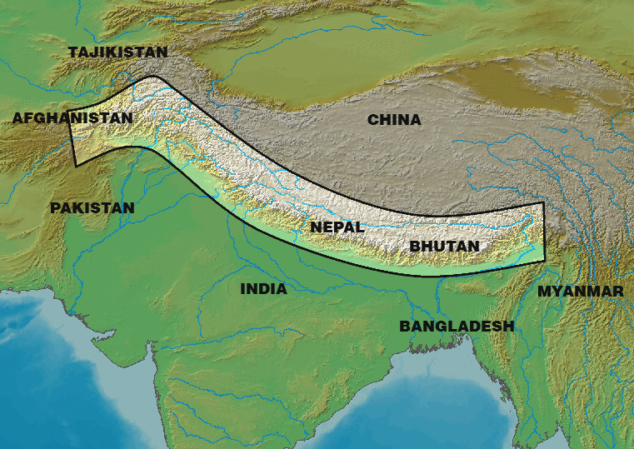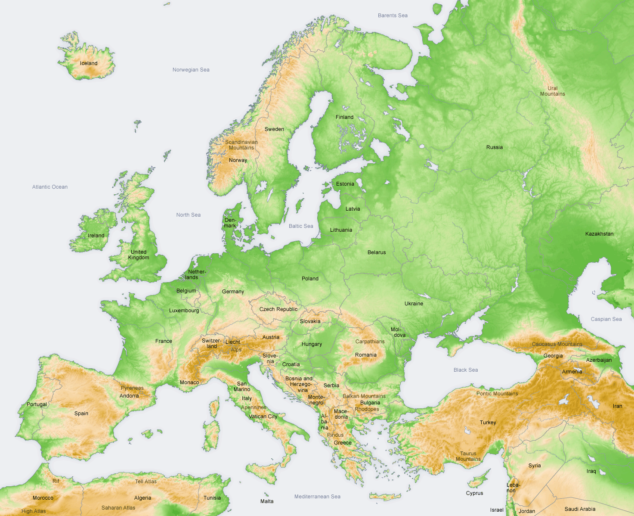Recent news of increasingly lethal clashes on the long and disputed border between India and China raises a question, how have the two most populous nations on Earth previously mostly kept the peace?
*
“Good fences make good neighbours” Robert Frost, Mending Wall
Western journalists and commentators often refer to Asia as if it were one, undifferentiated whole. In the USA, “Asian” implicitly usually refers to East Asia including China, plus the region that Europeans tended to call Indo-China but now is usually called South-East Asia. This use of the term “Asian” reflects the Pacific geography of which the USA is itself a part, plus that country’s role in the Vietnam War (which also affected Cambodia). Although there are some very high profile business leaders in the USA of Indian heritage, they somehow don’t get included in the common use of “Asian”.
By contrast, in the UK “Asia” is often short-hand for South Asia, reflecting British imperial history and the fact of immigration from India, Pakistan and Bangladesh into the UK over several decades. There are proportionately far fewer British people of East Asian descent. Although Britain’s role in China is a key part of the history taught in Chinese schools, it is largely non-existent in British schools and China has only recently started to loom large in British public discussions.
In each of these cases, “Asian” is a rather imprecise label for what is only one part of a vast continent. But referring to Asia as a single region isn’t very helpful either. Wikipedia lists 51 countries in Asia with a total population of 4.5 billion out of a global total of 7.8 billion. When Western writers refer to Asia, they are either using it as a short cut (see above) or simply mean “not-Western”. Oddly, Japan is often included in definitions of “the West” because it is a highly advanced and modern economy. Yet its history, geography and culture all make it something separate from European nations and their Anglophone historic offshoots (US, Canada, Australia and New Zealand).
It is particularly silly to lump together China and India. Both are huge nations with long and complex histories, some shared cultural and religious influences, such as Buddhism, and common invaders (the Mongols, Britain) but for the most part at least as different as any two European nations.
When two tribes don’t go to war
A lesson from European history, which has been particularly violent for centuries, both at home and at the hand of European imperialists around the world, is that two adjacent nations of similar power and ambition will tend to go to war (France, Spain, Germany, Russia, the UK, Scandinavia, the Balkans etc., etc.). Yet the curious fact of the Sino-Indian relationship is how relatively free of military clashes it has been. Before the recent border clashes, the last true conflict was the short war of 1962, when China invaded India, following tensions after the Tibetan uprising of 1959, after which India gave asylum to the Dalai Lama (where his presence remains a source of annoyance to the Chinese government). There have been smaller border skirmishes, the facts of which are disputed by both sides, in 1975 and 1967. There is a highly readable account of the 1962 war, although from a US foreign policy perspective, in Bruce Riedel’s excellent book JFK’s Forgotten Crisis.
The war of 1962 is little known in the west, partly because it started on 20 October, during the Cuban missile crisis, which is one of the most important events in human history, mainly for what nearly happened but did not: nuclear war between the USA and the USSR. The world collectively held its breath during that crisis and all other news was blotted out.
There were and remain disputes over the India-China border, yet much of the contested territory is over 5,000m high, the fighting taking place in exceptionally hostile territory of little apparent value. But this terrain is the key to why these two vast nations have mostly kept the piece: between India’s 1.3 billion people and China’s 1.4 billion, there lie the Himalayas, a vast fence between two potentially disputatious neighbours. While there are arguments about relatively tiny areas of land, the basic geographic fact that India (and Pakistan and Bangladesh) lie to the west and south, but China lies to the east and north, is not in dispute and provides a clear boundary (see the map below).

Part of the tragedy of central and eastern Europe is that there are few such natural boundaries, making countries insecure (justifiably in case of Russia, following two disastrous invasions in little over a century) and prone to conflict. The relief map below shows that much of Europe is pretty flat and there are few rivers big enough to be unambiguous boundaries.

It’s also fair to say that China has historically not been an imperial power in the European sense, the country’s vast scale being reason enough to call the leader Emperor (though an abiding theme in Chinese history is the failure of emperors to keep the country together or defend it from invaders). China has dominated its region for most of the last two thousand years but has rarely sought to actually invade other nations. (Vietnam might beg to differ, having been invaded by China in 1979, the result of that war being inconclusive(*). Vietnam was also occupied by China for around 1,000 of its 4,000 year history).
One famous exception was the unsuccessful attempts to conquer Japan in the 13th century, which were launched by the Mongol Chinese emperor Kublai Khan who conquered China in 1271.
(Kublai Khan was made famous in Britain in a 1797 poem of that name by romantic poet Samuel Coleridge Taylor, which begins: “In Xanadu did Kubla Khan/A stately pleasure-dome decree”. Xanadu, pronounced “Zanadoo”, seems to be a corruption of the Chinese “shangdu” 上都 which means upper capital, the name of Kublai Khan’s northern, summer capital in what is now the Chinese province of Inner Mongolia; the city was ruined many centuries ago and the capital shifted to Beijing. )
Further reflecting the importance of geography in human affairs, Japan’s success in repelling the Mongol fleets in 1274 and 1281 was partly owing to helpful typhoons, which became known in Japanese as kamikaze, meaning divine wind. There is a parallel here with Protestant England’s successful defense against a Catholic Spanish invasion fleet, known as the Armada, in 1588, when the wind blew in an unhelpful direction (from the Spanish point of view) and was gratefully called a “Protestant wind” by the English. The history (and some people would say the culture, but I’m not sure) of Japan and England (later Britain) both owe a lot to their island status.
The future is Asian but perhaps not how you think
It’s now pretty much conventional wisdom that the first half of the 21st century is going to be dominated by the tense relationship between the USA and China, against the backdrop of advancing climate change, which will cause enormous damage to both nations.
If India can somehow get its economic growth back to the high single digits, and with the prospect of a huge fall in China’s population a few decades from now, the second half of this century may well be dominated by India’s relationship with China, not least because although the great fence of the Himalayas will remain, the water in the mountains there which supplies the rivers that feed and provide power for India, China and South East Asia, will not.
*
(*) According to Wikipedia, Chinese Vice-premier Deng Xiaoping, who was visiting the United States for the first time, told American president Jimmy Carter on 1 January 1979: “The little child is getting naughty, it’s time he got spanked.” (Original Chinese words: 小朋友不听话,该打打屁股了。) China attacked on February 15th, the day it ended its 1950 mutual defense agreement with the Soviet Union, which had become an ally of Vietnam.


Leave a Reply